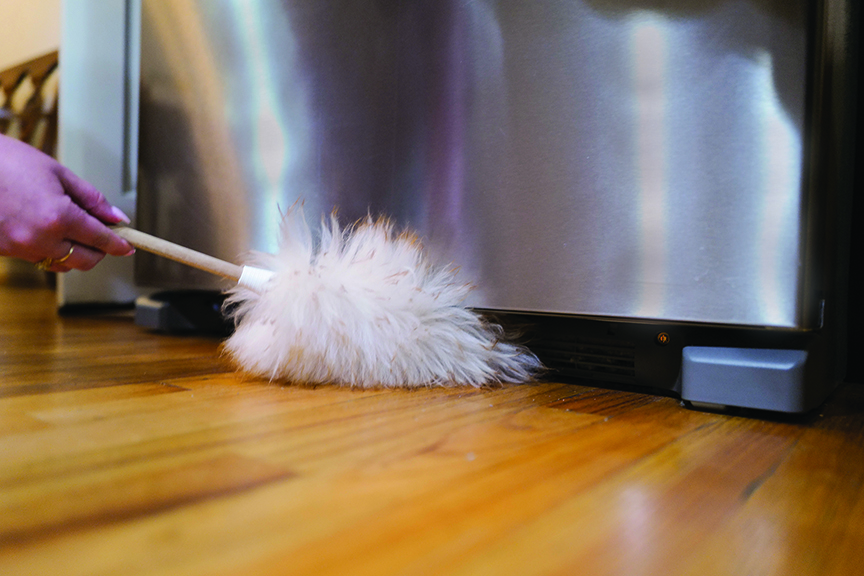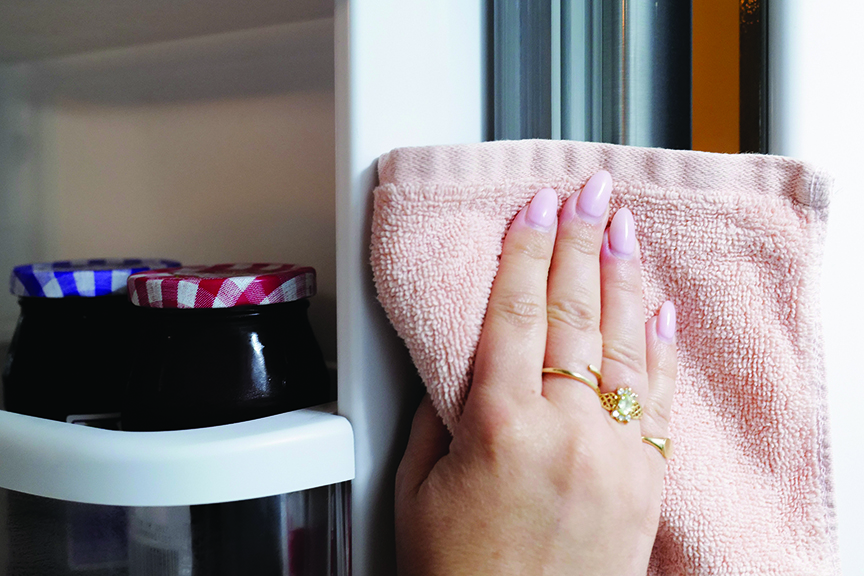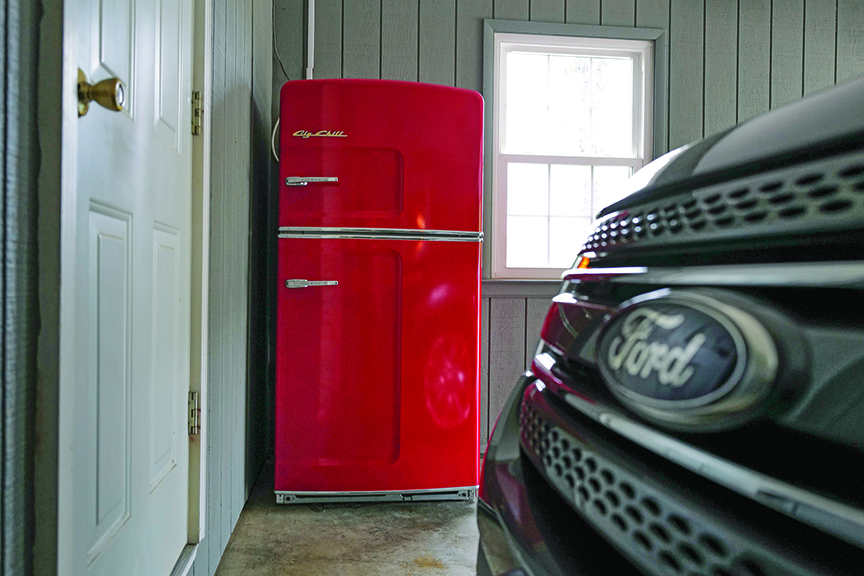Refrigerator and freezer efficiency tips
August 2025

Clean the vent cover and remove dust and debris buildup in the vent area under the front of the refrigerator.
by Miranda Boutelle, Contributing Columnist
Q: What are some ways I can improve the efficiency of my refrigerator and freezer?
A: When exploring ways to be more efficient with refrigerators, we often find ourselves stuck between convenience and conserving energy.
While you can upgrade to newer models, equipment upkeep habits can be just as important for saving energy.
Here is some guidance on equipment energy use, including tips to keep your current equipment running efficiently and ways to limit overuse of refrigeration in our homes.
The Department of Energy helps us understand what to look for in our existing equipment and new appliances. Generally, the larger the refrigerator, the more energy it consumes. Models with the freezer on top tend to use less energy than bottom freezers or side-by-side units. A refrigerator 15 years or older generally uses about 35% more energy than a newer, Energy Star-certified model.
Let’s explore some tips to keep your refrigerator running efficiently.
KEEPING IT ORGANIZED
One of the most significant issues with refrigerator energy use is opening the door. An organized fridge makes food items easier to find, minimizing open-door time and keeping cold air inside. Place items in the same spots so they are easier and faster to find. I tell my kids to take a quick look inside at the options and close the door while they are deciding what to eat.

Keep your refrigerator gaskets clean to ensure a tight seal around the door.
KEEPING IT CLEAN
Regularly cleaning the gasket — the flexible strip around the perimeter of the fridge door — ensures a tight seal between the door and the unit to keep cold air inside. If the gasket is not sealing tightly, it should be replaced. Removing and cleaning the vent at the bottom of the unit can help airflow. For the coils at the back, use an extended cleaning brush instead of moving the fridge and risking injury.
KEEPING IT SAFE
For food safety, the DOE recommends setting your refrigerator temperature between 35 and 38 degrees and your freezer at 0 degrees. Do not overstuff a refrigerator, as this will cause it to work harder and possibly cause inconsistent optimal temperatures. If you have a second refrigerator or freezer, do you need it plugged in all year? Keep it unplugged and empty during the warmer months. Unplugging it when you’re not using it will save energy, and you’ll still have it as a backup when needed. If possible, consider the location. Keeping the second fridge or freezer in a cool basement versus a hot garage requires less energy.
Abiding by these simple habits is an easy way to be more efficient with your in-home refrigeration.
Miranda Boutelle writes on energy efficiency topics for the National Rural Electric Cooperative Association.

If you have a secondary refrigerator or freezer, consider ways to minimize food waste, and unplug the extra appliance when it’s not in use.
